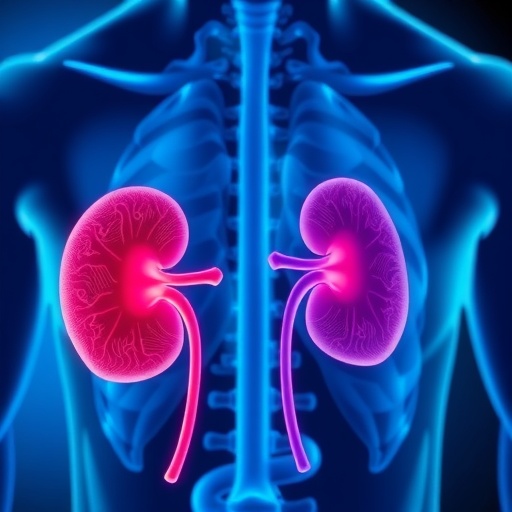
In a groundbreaking study published in the Journal of General Internal Medicine, researchers examined the filling patterns of glucose-lowering medications that provide both cardiovascular and kidney benefits across various demographics in the United States between 2012 and 2021. This research is particularly significant as it brings attention to the accessibility and utilization of critical medications in both rural and urban settings. It underscores the challenges faced by healthcare providers and patients alike in managing diabetes, a condition that has reached epidemic proportions in the United States.
The study conducted by Steiger, Swarna, Herrin, and colleagues, meticulously analyzed the trends over a decade, providing crucial insights into how these medications were dispensed. This analysis is crucial because it reveals disparities that may exist in different healthcare environments, particularly when considering the socioeconomic determinants of health. Rural populations often face barriers that urban areas might not contend with, including limited access to healthcare services, which may affect their use of these life-saving medications.
Notably, the findings indicate that there is a significant variation in medication fill rates between urban and rural populations. This disparity raises serious concerns over health equity and the adequacy of healthcare resources allocated to different demographics. In areas where accessibility is limited, patients with diabetes may not receive the full spectrum of medical care necessary for optimal management, leading to worsening health outcomes. The implications of these findings are profound, suggesting a need for targeted interventions and policy changes to bridge the gap in healthcare delivery.
In addition to geographical disparities, the study revealed patterns relating to the types of glucose-lowering medications utilized. Medications such as SGLT2 inhibitors and GLP-1 receptor agonists are praised not only for their glucose-lowering effects but also for their cardiovascular and renal protective benefits. However, the adoption of these latest therapeutic options appears inconsistent across different populations. Understanding why certain medications are filled more frequently in specific regions can inform healthcare authorities about potential barriers to the successful incorporation of these drugs into standard diabetes care.
The researchers also examined medication persistence, assessing how long patients continued their prescribed therapies. Medication adherence is a critical factor in managing chronic diseases like diabetes. Factors such as the complexity of drug regimens, side effects, cost, and patient education all play important roles in whether individuals continue their treatment as prescribed. Persistent medication use correlates strongly with better clinical outcomes, and the study highlights a pressing need for strategies that improve adherence among both rural and urban patients.
Furthermore, the study provides insights into the impact of socioeconomic status on medication filling patterns. Individuals from lower-income backgrounds may face multiple obstacles, such as higher out-of-pocket costs or a lack of insurance, that hinder their access to necessary medications. Identifying solutions that can alleviate these financial burdens is essential for improving health equity. Policies aimed at reducing drug costs or providing better insurance coverage can significantly influence individuals’ ability to obtain these critical medications.
The analysis also suggested certain regional trends, where specific areas displayed higher fill rates for certain drug classes. This geographical variance could be attributed to local healthcare practices, the availability of specialists, or the prevalence of diabetes-focused educational programs. Community initiatives that promote awareness about the benefits of glucose-lowering medications may enhance the adoption of these therapies in underserved areas.
Lastly, healthcare providers need to be aware of these patterns to ensure they are not only prescribing effective treatments but also considering the patient’s socioeconomic context. Tailoring treatment plans to fit the socio-economic realities of patients can foster better engagement and outcomes. For example, patient education initiatives can be crucial in rural areas where healthcare resources are scarce, improving understanding of available treatments and how to access them.
This comprehensive study serves as a call to action for clinicians, policymakers, and public health advocates alike. It highlights the critical need for systematic changes that promote health equity, ensuring that all patients, regardless of their geographical or economic circumstances, have access to the medications that can enhance their quality of life and reduce the risk of severe complications associated with diabetes. Bridging the gap will require coordinated efforts across multiple sectors of healthcare and society.
In summary, this meticulous examination of glucose-lowering drug fill patterns represents an essential contribution to our understanding of medication access and adherence in the U.S. The implications for public policy and individual healthcare practices cannot be overstated. If we are to improve clinical outcomes for diabetes patients across both rural and urban settings, we must be willing to confront the disparities that exist and work collaboratively towards solutions that empower all individuals to achieve better health.
The landscape of diabetes treatment and care is evolving, and this study offers new pathways towards realizing equitable treatment opportunities across diverse populations. A future where every individual with diabetes has access to effective therapies, irrespective of their living conditions, is not just a possibility but an obligation that must be pursued by the healthcare community. The stakes are high, and the journey towards equitable healthcare delivery continues to gain urgency as we learn more about the systemic barriers that persist in our society.
Subject of Research: Filling patterns of glucose-lowering drugs with cardiovascular and kidney benefits in the rural and urban United States.
Article Title: Fill Patterns of Glucose-Lowering Drugs with Cardiovascular and Kidney Benefits in the Rural and Urban United States, 2012–2021.
Article References:
Steiger, K., Swarna, K.S., Herrin, J. et al. Fill Patterns of Glucose-Lowering Drugs with Cardiovascular and Kidney Benefits in the Rural and Urban United States, 2012–2021.
J GEN INTERN MED (2025). https://doi.org/10.1007/s11606-025-09784-0
Image Credits: AI Generated
DOI: 10.1007/s11606-025-09784-0
Keywords: glucose-lowering drugs, cardiovascular benefits, kidney benefits, rural healthcare, urban healthcare, diabetes management, medication adherence, health equity.
Tags: cardiovascular benefits of diabetes drugschallenges in diabetes treatment in rural areasdiabetes epidemic in the United Statesglucose-lowering medicationshealth equity in glucose-lowering therapieshealthcare disparities in diabetes managementkidney health and diabetes treatmentlong-term effects of glucose-lowering drugspatient access to diabetes medicationssocioeconomic factors in diabetes caretrends in diabetes medication utilizationurban vs rural healthcare access




